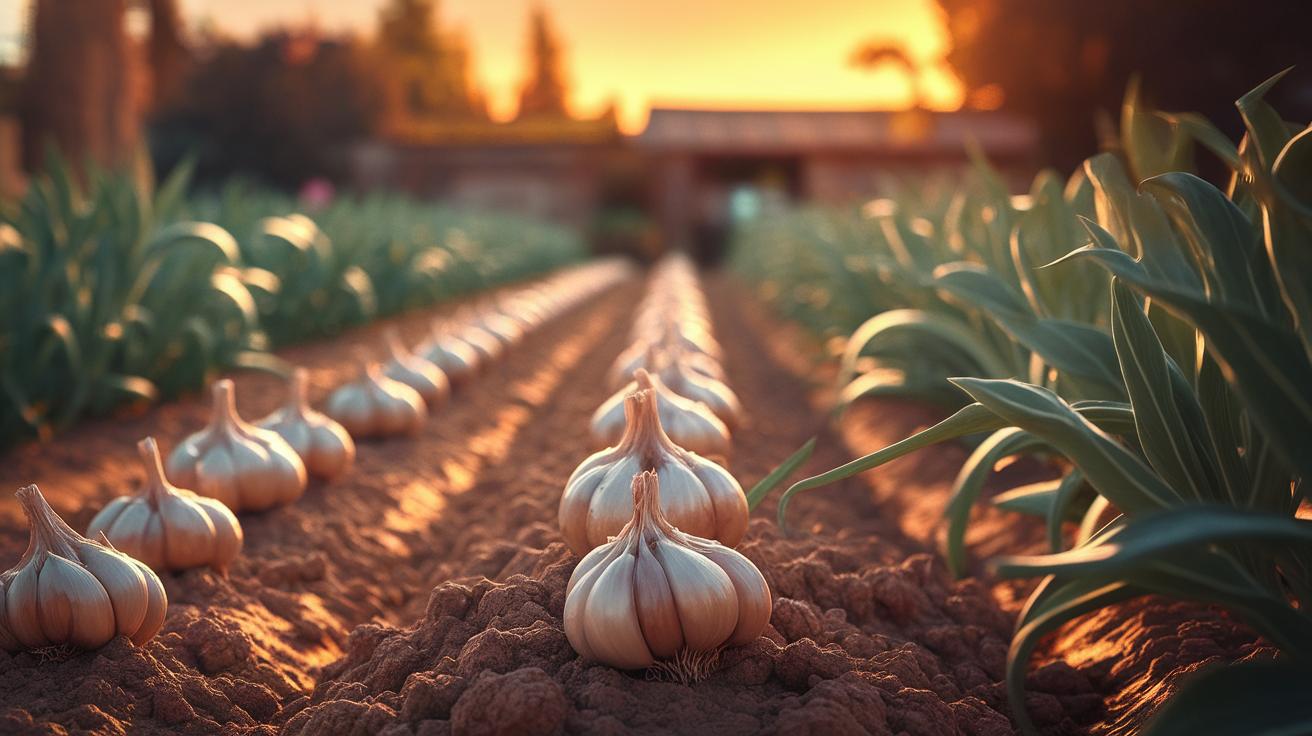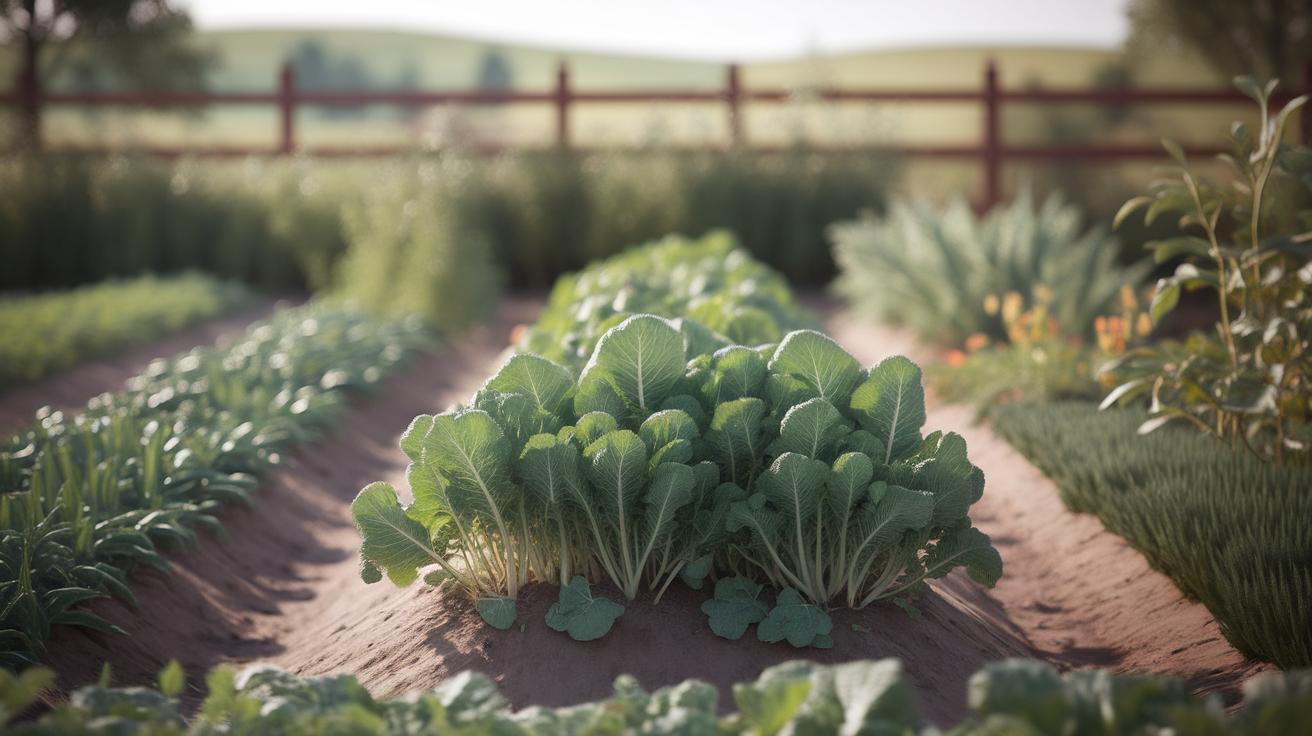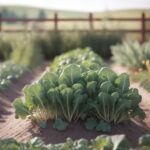Introduction
Garlic, scientifically known as Allium sativum, is not just a staple in kitchens around the world; it is also celebrated for its unique flavor and numerous health benefits. Cultivating garlic can elevate culinary experiences, and for those passionate about cooking, learning how to grow garlic is an invaluable skill. Growing garlic offers home gardeners the chance to experience the bounty of fresh produce while enhancing their dishes with robust flavors that dried counterparts simply cannot match. Cultivating garlic may seem daunting, but with the right tips and techniques, anyone can succeed in growing this fragrant herb in their own garden.
In this article, we will dive deep into the intricacies of garlic cultivation, exploring everything from choosing the right variety and planting techniques to caring for the plants and harvesting the bulbs. Each section is crafted to provide practical, easy-to-follow advice that will help both novice and experienced gardeners. Whether you’re looking to imbue your meals with fresh, aromatic garlic or simply wish to learn about its cultivation, these tips will guide you on a flavorful journey. Prepare to embrace the joys of growing garlic and the culinary opportunities that await.
The Essence of Garlic Explore the Cultural Significance and Culinary Uses of Garlic
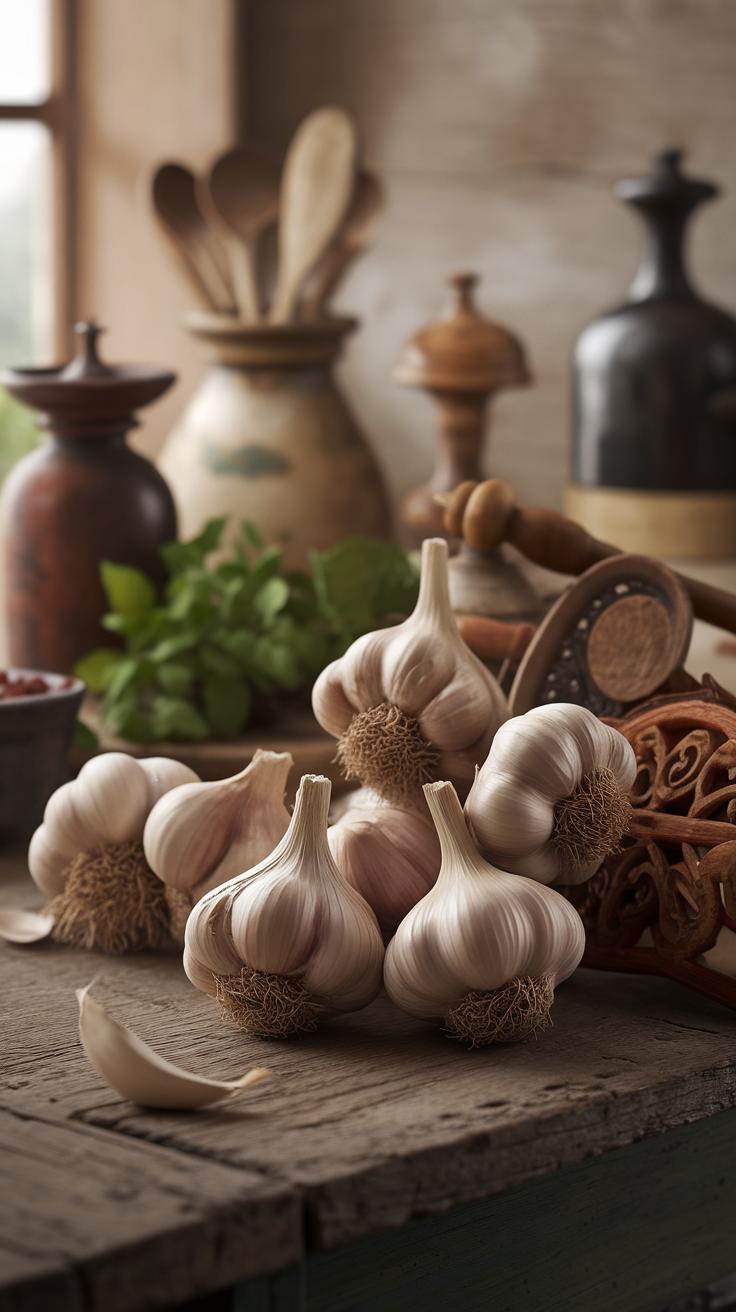
Garlic has woven itself into the fabric of human culture for centuries, serving as both a culinary staple and a symbol of health. Its origins trace back to ancient civilizations, notably in regions such as Egypt and Mesopotamia, where it was revered for its medicinal properties and used to ward off evil spirits. The strong flavor of garlic has made it a beloved component in diverse cuisines worldwide, enhancing everything from savory dishes to sauces.
Across various cultures, garlic plays a significant role in traditional recipes and rituals. It is recognized for its numerous health benefits, including antimicrobial properties and potential cardiovascular advantages. As a result, garlic not only adds depth to culinary creations but also embodies a rich history that spans millennia, merging taste with tradition and wellness.
Understanding Garlic Varieties Discover Their Unique Characteristics and Flavor Profiles
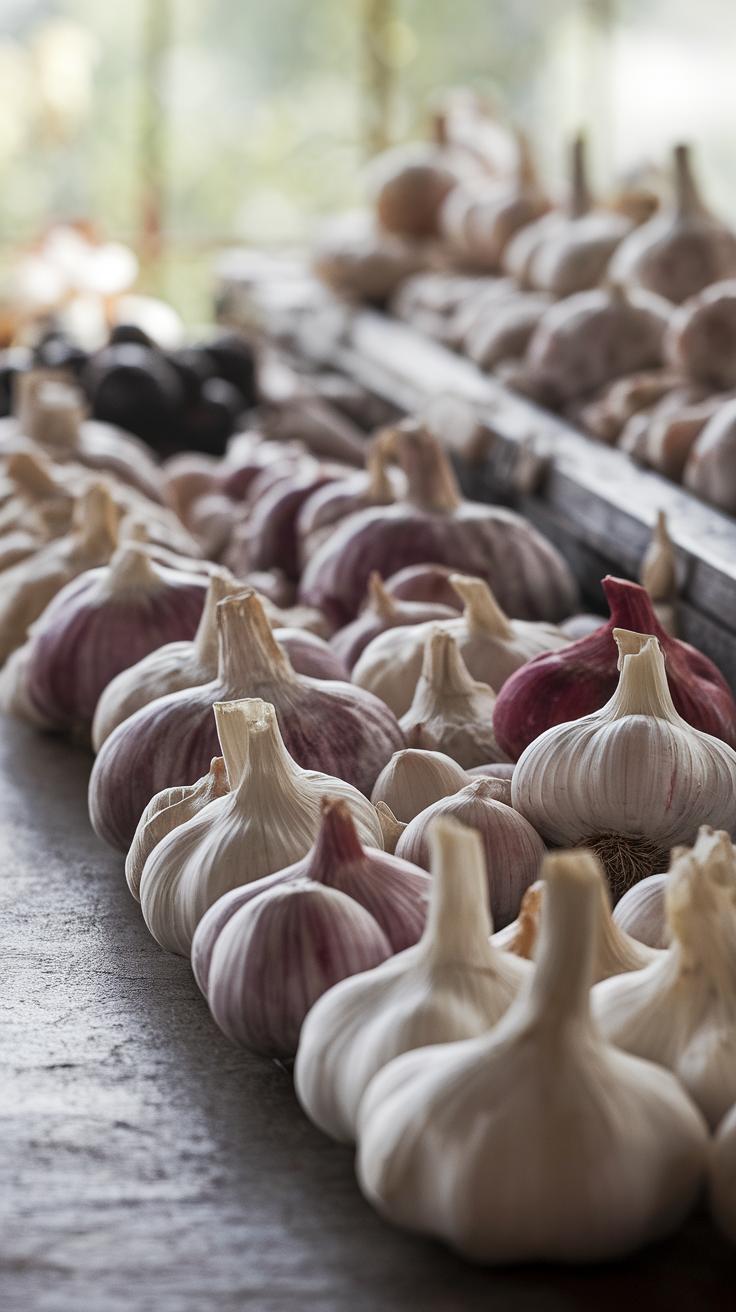
Exploring Different Types of Garlic
Garlic exists in numerous varieties, each exhibiting unique characteristics that can significantly influence culinary applications. The two main categories of garlic are hardneck and softneck varieties. Hardneck garlic, known for its robust flavors and higher clove count, thrives in colder climates. Varieties such as Rocambole and Porcelain are renowned for their rich, spicy flavors, making them ideal for roasting or use in hearty dishes.
In contrast, softneck garlic is more common in commercial settings and has a milder flavor. Varieties like Silverskin and Artichoke possess a longer shelf life and are perfect for raw applications, enhancing salad dressings and salsas. Exploring these varied flavor profiles helps home cooks select the right garlic for their specific culinary needs, ensuring exquisite taste in every dish.
Flavor Impact in Cooking
The choice of garlic variety can dramatically alter the flavor of a dish. Hardneck garlic typically offers a spicier, more complex taste, ideally suited for bold recipes. Softneck garlic’s milder profile allows it to complement rather than overpower other ingredients, providing a subtle depth. Understanding these distinctions helps culinary enthusiasts select the perfect garlic variety to enhance their meals, creating an experience that highlights the aromatic essence of this beloved ingredient.
Preparing for Planting Optimal Soil and Location for Flavorful Garlic
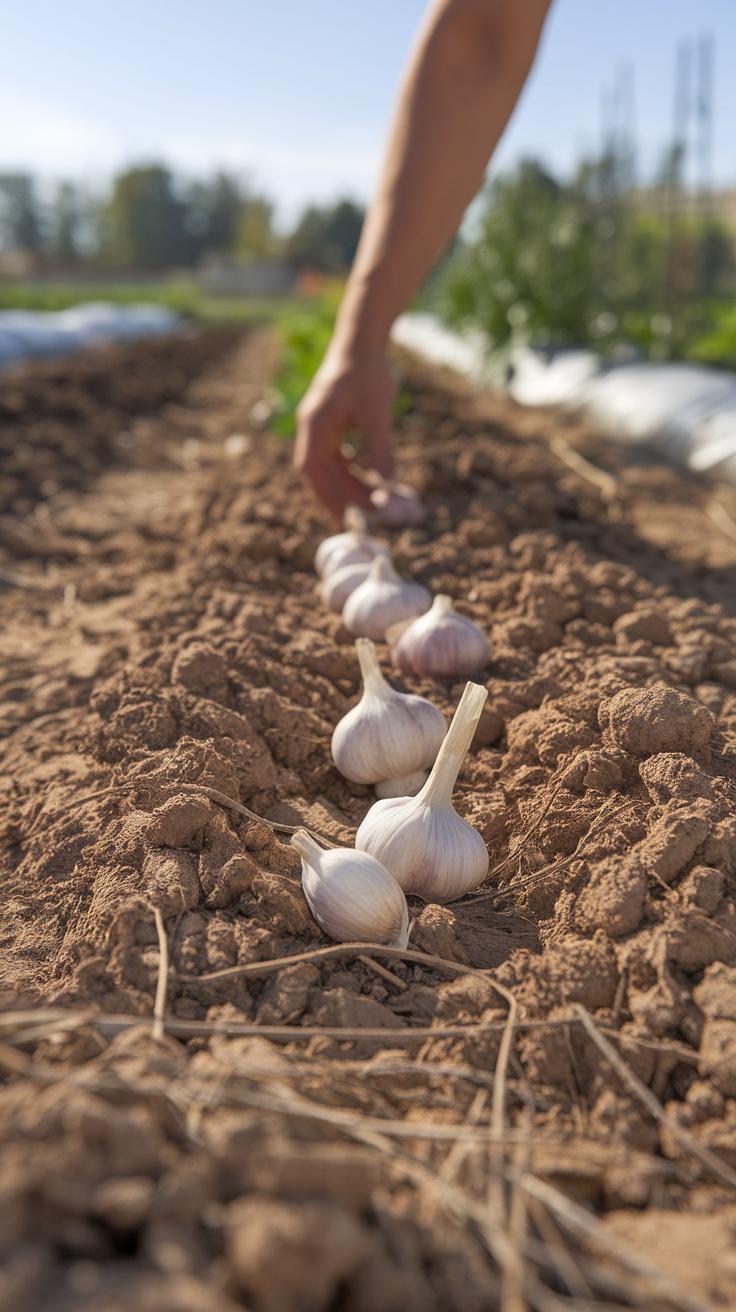
Selecting the Right Location
Choosing the ideal location for garlic cultivation plays a significant role in achieving robust flavors. Garlic thrives in areas that receive plenty of sunlight, ideally around six to eight hours daily. The site should also have good air circulation to prevent moisture buildup, which can lead to diseases. Opt for a gently sloped area if possible, as this facilitates proper drainage. Avoid pockets that tend to collect water, as garlic prefers well-drained soil. Take into consideration the proximity to your kitchen garden for easy access during harvest.
Preparing the Soil
Preparing the soil is critical for fostering healthy garlic growth. Start by testing the soil’s pH, aiming for a range of 6.0 to 7.0, which is ideal for garlic. Amend the soil with organic matter, such as compost or well-rotted manure, to enhance its fertility and structure. Tilling the soil to a depth of at least 12 inches ensures proper aeration and allows roots to establish more deeply. Incorporating a balanced fertilizer can further enrich the soil, providing essential nutrients that boost flavor development. Clear any weeds and debris to create an optimal environment for growth.
Planting Garlic Cloves Timing Depth and Spacing Best Practices
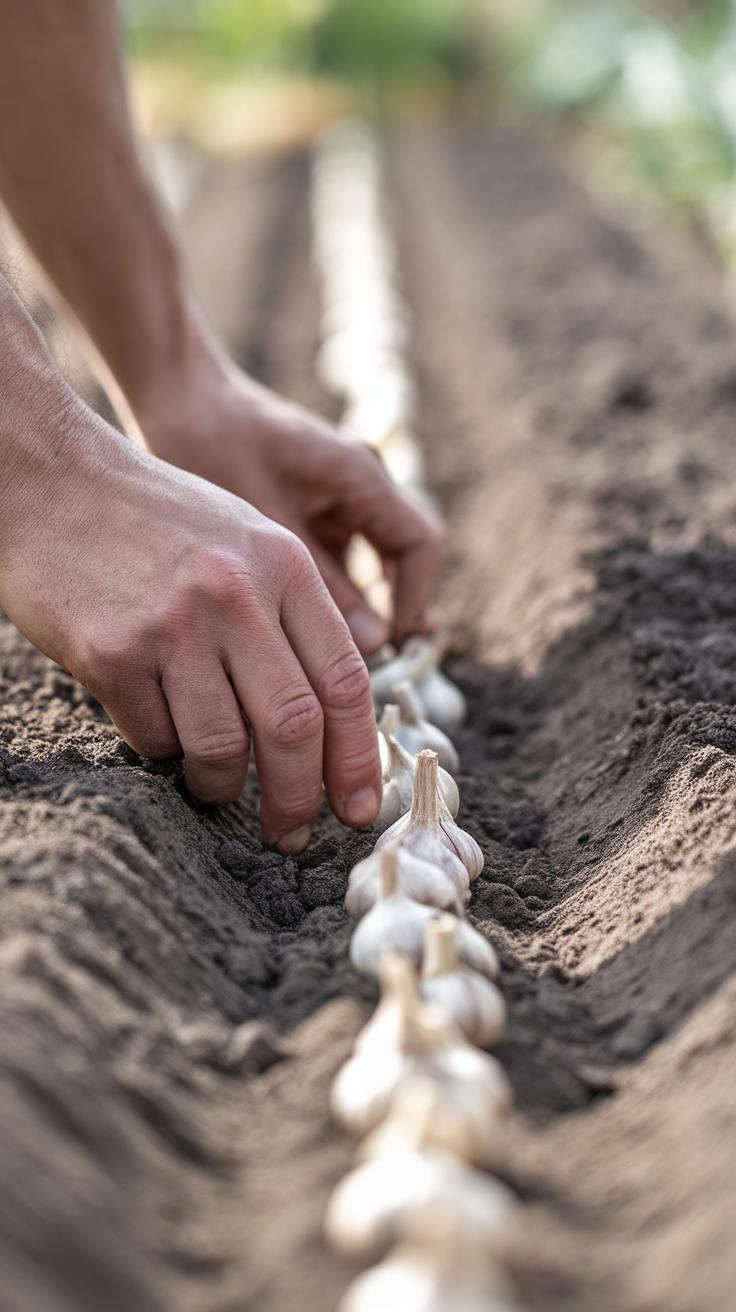
Timing and Preparation
Timing plays a critical role in achieving a bountiful garlic harvest. Ideally, garlic should be planted in the fall, about four to six weeks before the ground freezes. In warmer climates, early spring can also work, but fall planting tends to produce more robust bulbs. Before planting, select healthy garlic cloves, ensuring they are disease-free. Separate the cloves from the bulb while keeping the papery skins intact, as this helps protect them during growth.
Depth and Spacing Best Practices
When it comes to planting depth, cloves should be placed 2 to 4 inches deep in well-drained soil. This depth not only protects them from potential frost but also encourages strong root development. Space cloves 6 to 8 inches apart in rows that are 12 inches apart, allowing ample room for their foliage to flourish without overcrowding. Following these guidelines will maximize airflow and reduce the risk of disease, ultimately enhancing the flavor and quality of your garlic bulbs.
Caring for Garlic Plants Provide Guidance on Watering Fertilizing and Maintaining Garlic Plants Throughout the Growing Season
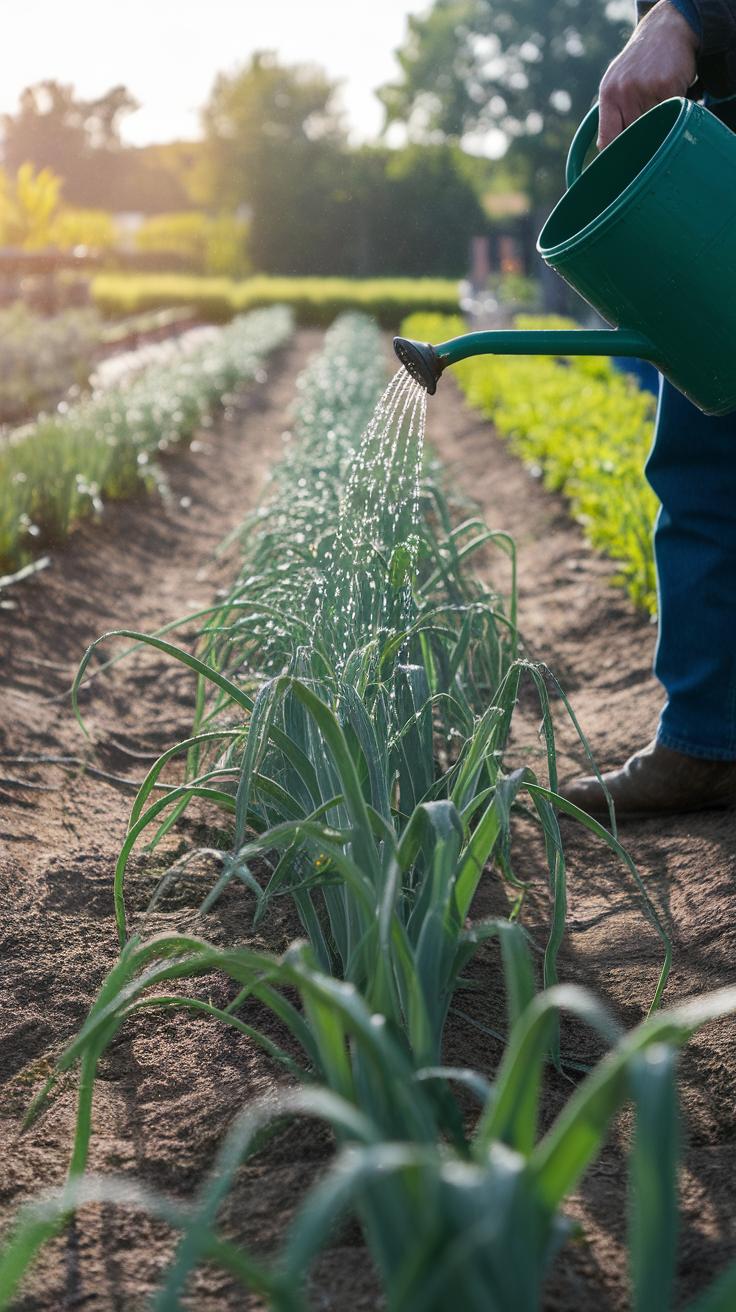
Watering Techniques for Flavorful Garlic
Maintaining consistent moisture is vital for garlic plants as they develop. During the early stages, soil should remain evenly moist but not soggy. Once the bulbs begin to swell, reducing watering significantly is essential to encourage flavor concentration. It’s advisable to use drip irrigation or soaker hoses to deliver water directly to the roots without wetting the foliage, which helps to prevent diseases. Monitor rainfall and adjust accordingly; garlic generally requires about 1 inch of water per week, particularly in dry periods, to achieve optimal growth.
Fertilizing for Maximum Flavor
Applying fertilizer enhances garlic’s flavor profile and promotes healthy growth. At planting, incorporate a balanced fertilizer into the soil to supply essential nutrients. As growth progresses, particularly in the spring, side-dressing with nitrogen-rich organic fertilizers such as compost or fish emulsion helps boost overall vitality. Timing is crucial; fertilize when leaves start to grow actively to maximize nutrient absorption. Avoid over-fertilizing, as this can result in excessive foliage at the expense of bulb development.
General Maintenance Tips
Proper maintenance practices can significantly impact garlic’s health and flavor. Regularly check for weeds, as they compete for nutrients and moisture. Mulching around plants with straw or grass clippings not only suppresses weeds but also retains soil moisture. Additionally, monitoring plants for signs of stress or disease allows for early intervention. As the season progresses, gently loosen soil around the base of the plants to aerate the roots. By maintaining a close eye on your garlic plants and providing necessary care, you will cultivate exceptionally flavorful garlic bulbs.
Pest and Disease Management Protecting Your Garlic from Common Threats
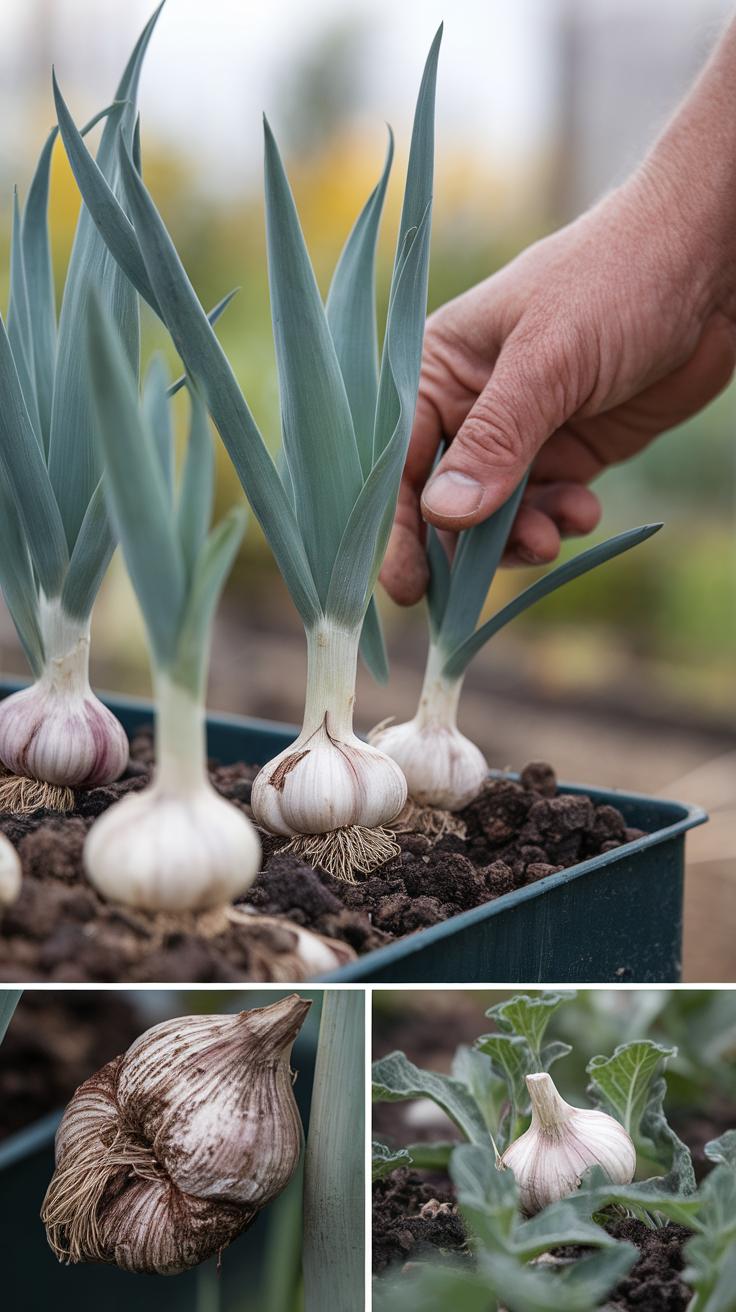
Identifying Garlic Pests
Pests can significantly impact garlic production if left unchecked. Common culprits include garlic aphids, which suck sap from the plants, resulting in yellowing leaves and stunted growth. Thrips are another menace, causing leaf distortions and weakening the plants. To combat these pests, introducing beneficial insects such as ladybugs or lacewings into your garden can help maintain a balance, as they feed on harmful species.
Tackling Garlic Diseases
Diseases like white rot and downy mildew pose threats to a healthy garlic crop. White rot, characterized by a white fungal growth on the bulbs, can lead to decay. To prevent this, practice crop rotation and plant garlic in well-draining soil to reduce moisture accumulation. For downy mildew, ensure proper air circulation and avoid wetting the foliage during watering. Using resistant garlic varieties can also provide a solid defense against these diseases, ensuring a bountiful and flavorful harvest.
Harvesting Garlic Signs of Mature Garlic Plants and Optimal Methods for Preservation
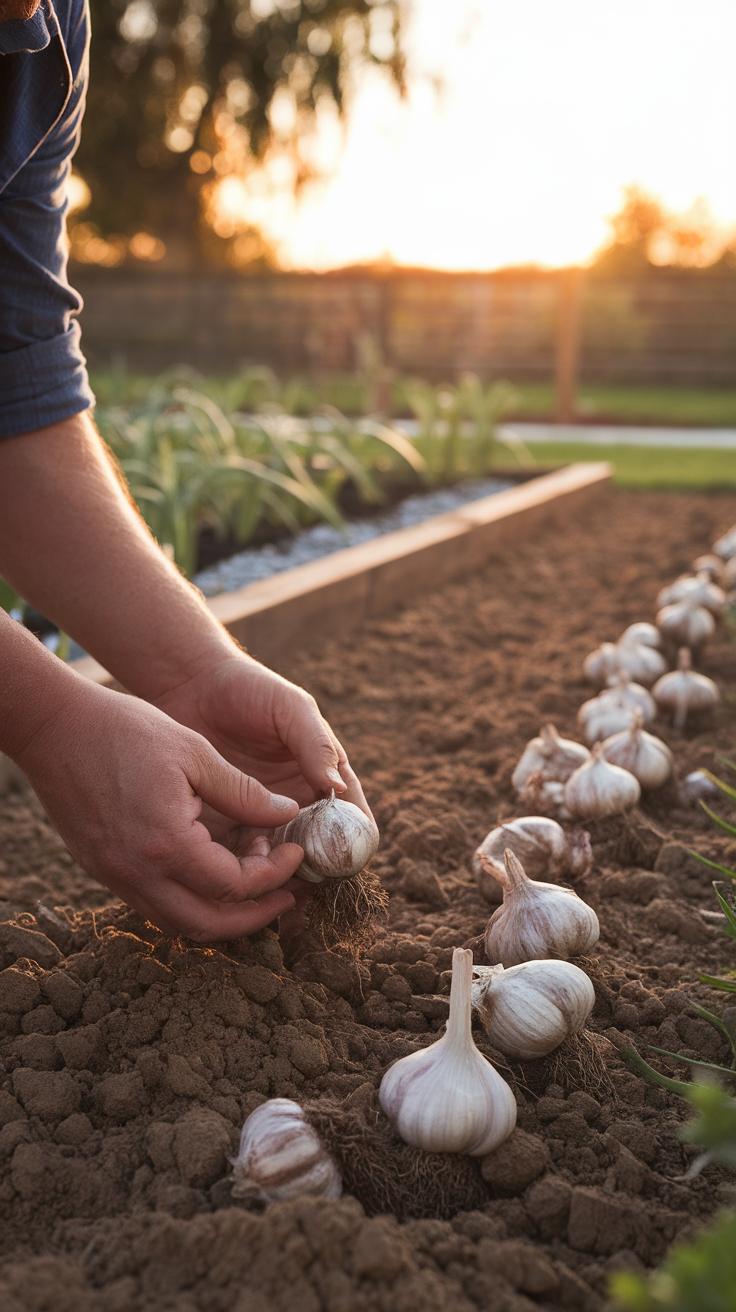
Monitoring garlic as it reaches maturity is essential for harvesting at the right time. Signs of mature garlic plants include yellowing leaves that start to brown, with the lower leaves often dying back first. When about one-third of the leaves are still green, it’s a good indicator that the bulbs have matured. Closer observation reveals firm and plump bulbs beneath the soil. Timing is critical, as harvesting too late can lead to split bulbs and reduced storage potential.
To ensure optimal preservation, use a garden fork to gently loosen the soil around the bulbs, taking care not to damage them. Grasp the tops and pull them straight up, avoiding twisting. After harvest, allow garlic to cure in a cool, dry, and well-ventilated area for two to four weeks. This process enhances flavor and prepares it for storage, setting the stage for your culinary explorations ahead.
Storing Garlic Best Practices for Preserving Flavor
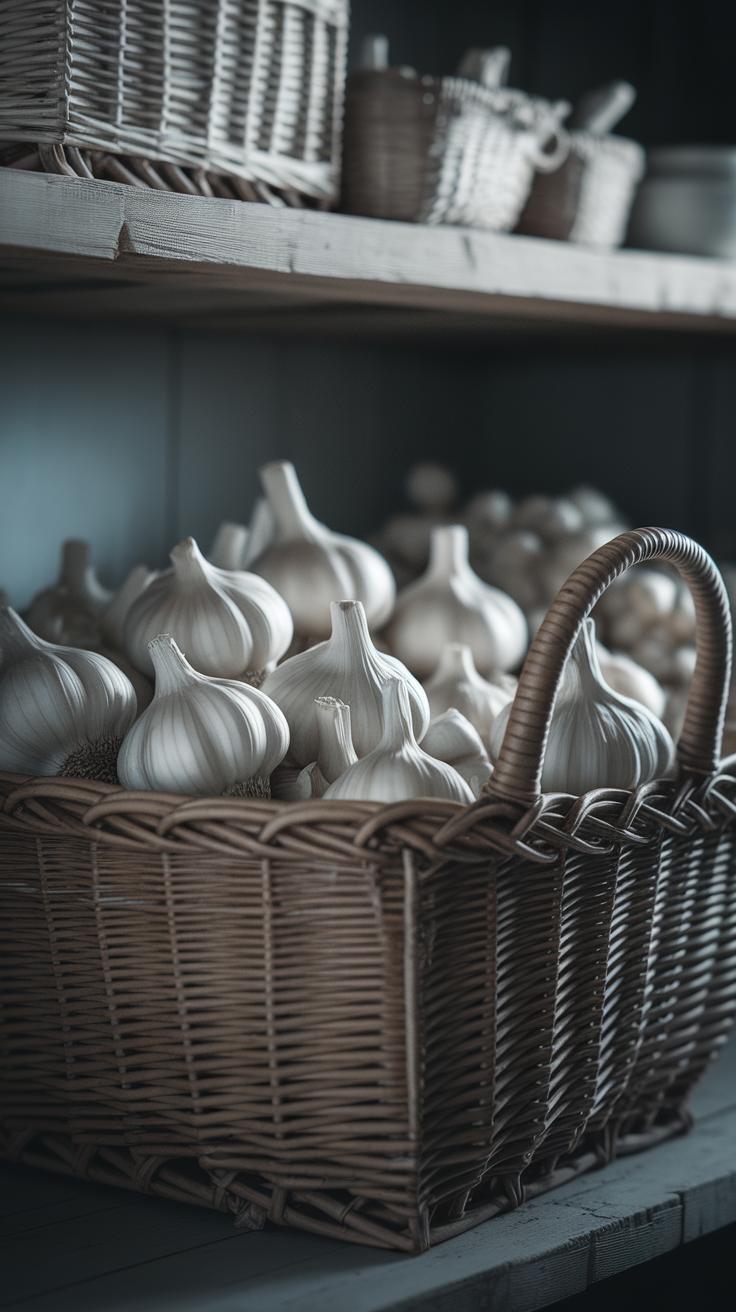
Proper storage is vital for maintaining the flavor and quality of harvested garlic bulbs. Start by curing the bulbs in a warm, dry area with good air circulation for about two to four weeks. This process allows the skins to dry and protects the cloves from spoilage. Once cured, trim the stems to about an inch above the bulb and remove any excess dirt without washing the garlic. Store the bulbs in a cool, dark place with low humidity, such as a pantry or cellar, ensuring good airflow. Ideal storage containers include mesh bags, paper bags, or wooden crates. Avoid plastic bags, as they trap moisture and promote mold growth.
Creative Culinary Uses for Garlic
Garlic is a versatile ingredient that enhances a variety of dishes. Begin by incorporating fresh garlic into sautés, marinades, and dressings for a robust flavor boost. Roasted garlic adds a sweet, mellow taste, perfect for spreading on bread or mixing into mashed potatoes. For a unique twist, try pickling garlic cloves, which can serve as a tangy accompaniment to charcuterie boards. Garlic-infused oils also make an excellent base for salad dressings or drizzling over pizza. The ability to use garlic in both its raw and cooked forms allows for endless culinary exploration, making it an indispensable component in the kitchen.
Conclusions
Growing garlic is a rewarding endeavor that not only enhances your cooking but also allows you to appreciate the process of cultivating a beloved herb. By understanding the nuances of garlic cultivation—from selecting varieties and preparing soil to managing pests and harvesting—you can ensure a plentiful harvest. Garlic’s rich history and its health benefits make it a worthy addition to any garden, enriching meals and home-cooked dishes.
By following the strategies outlined in this article, you can create a thriving garlic crop and enjoy the flavorful rewards of your labor. Whether you seek to grow garlic for culinary purposes or simply as a gardening challenge, the satisfaction of working with this versatile plant will surely enhance your home gardening experience. Take the leap into garlic gardening, and transform your culinary practices while embracing the richness of this age-old herb.


